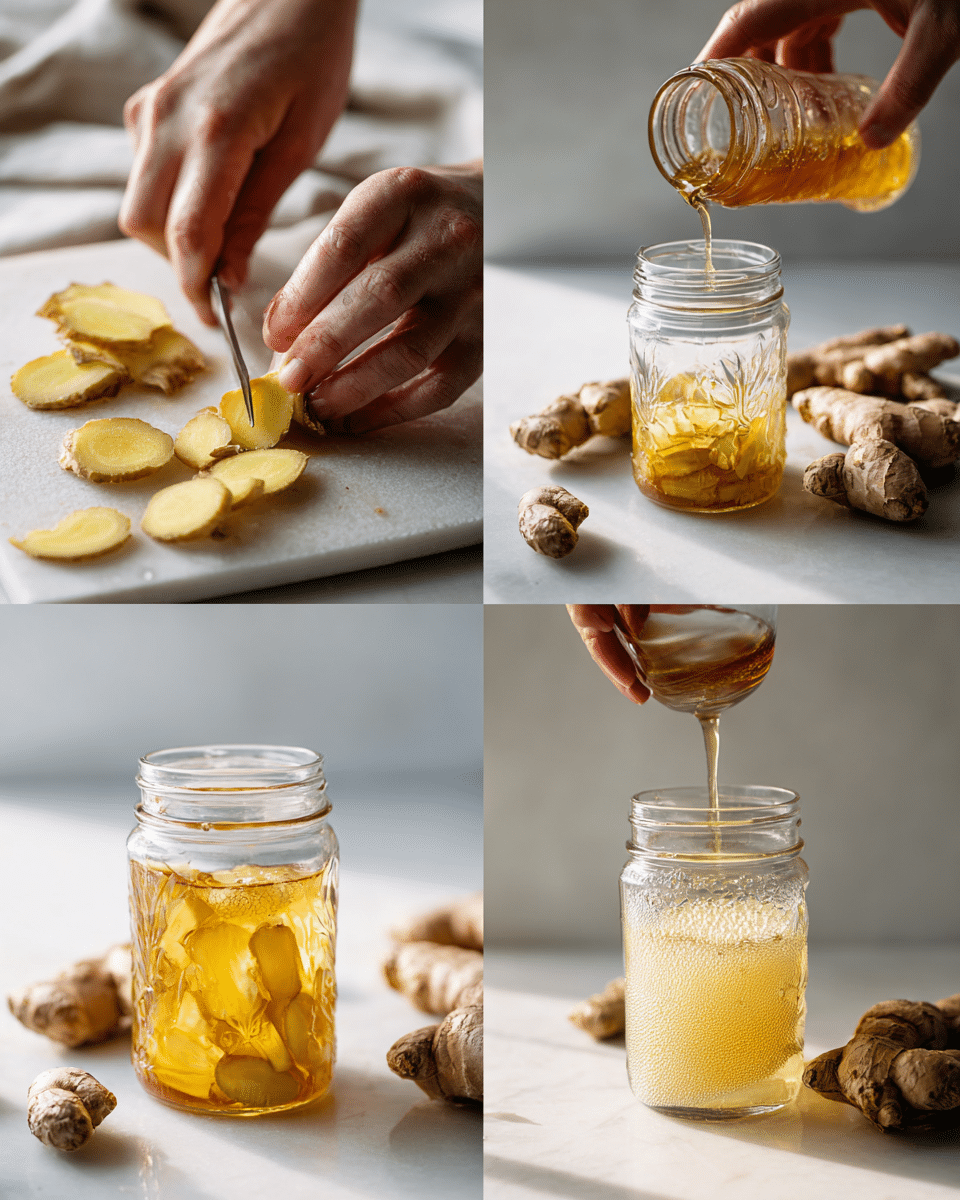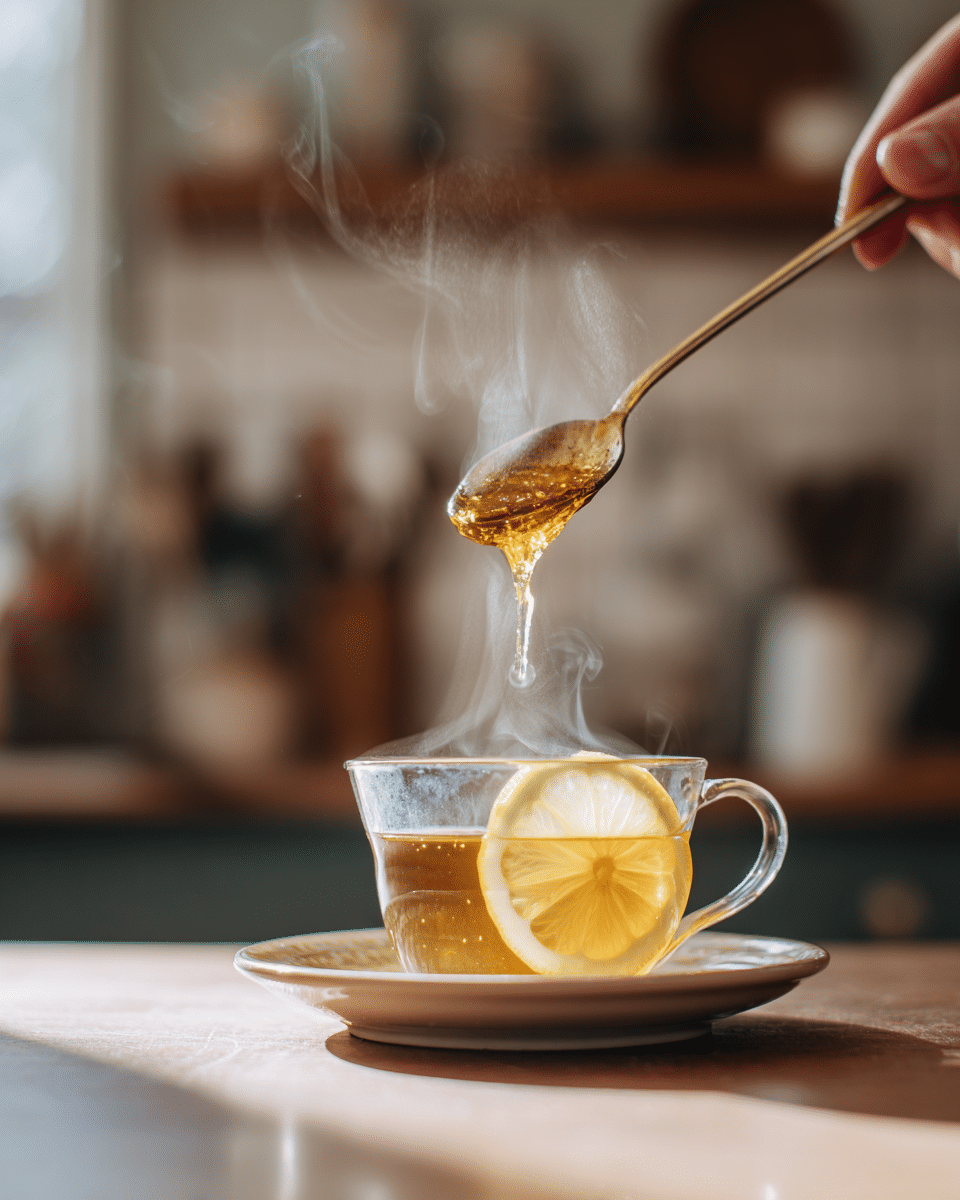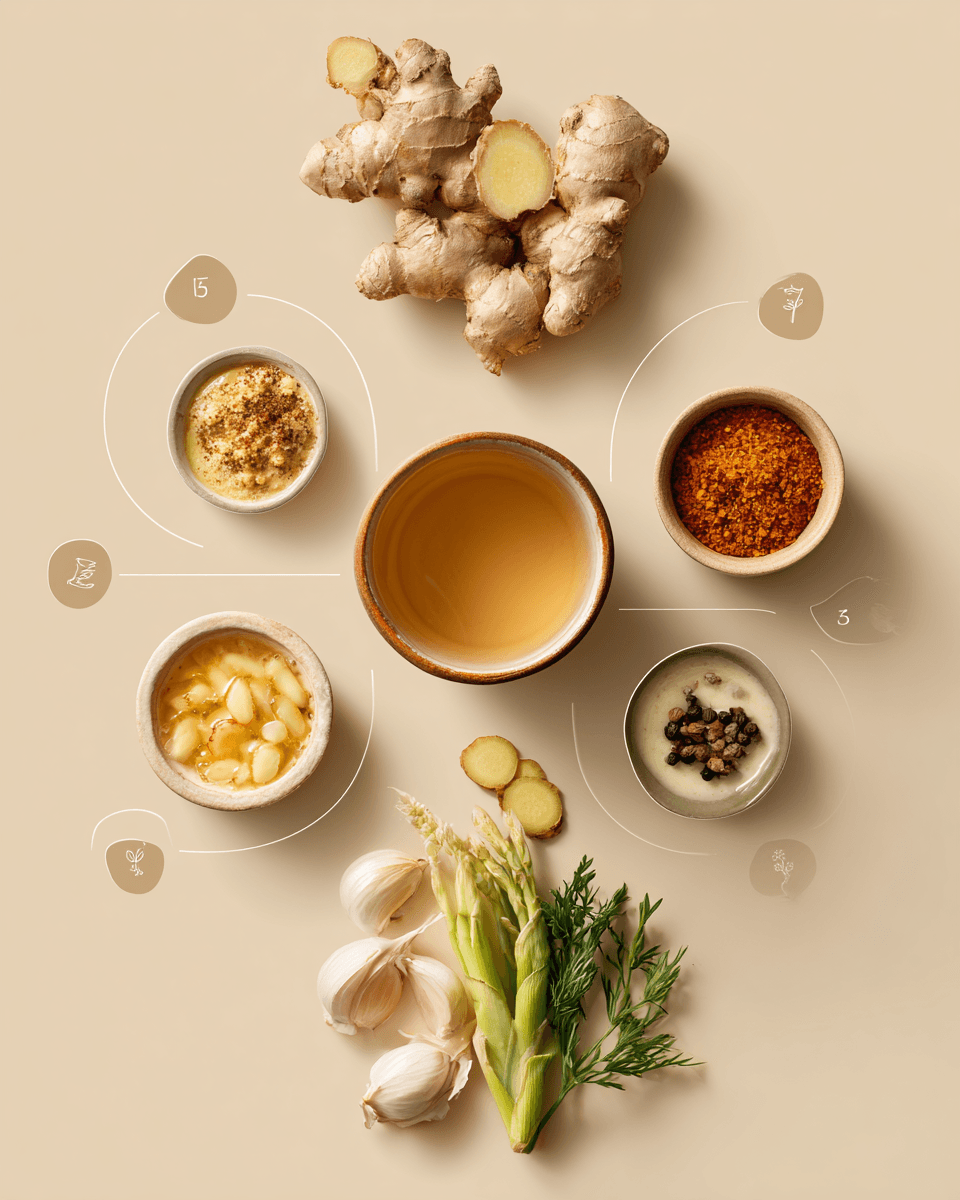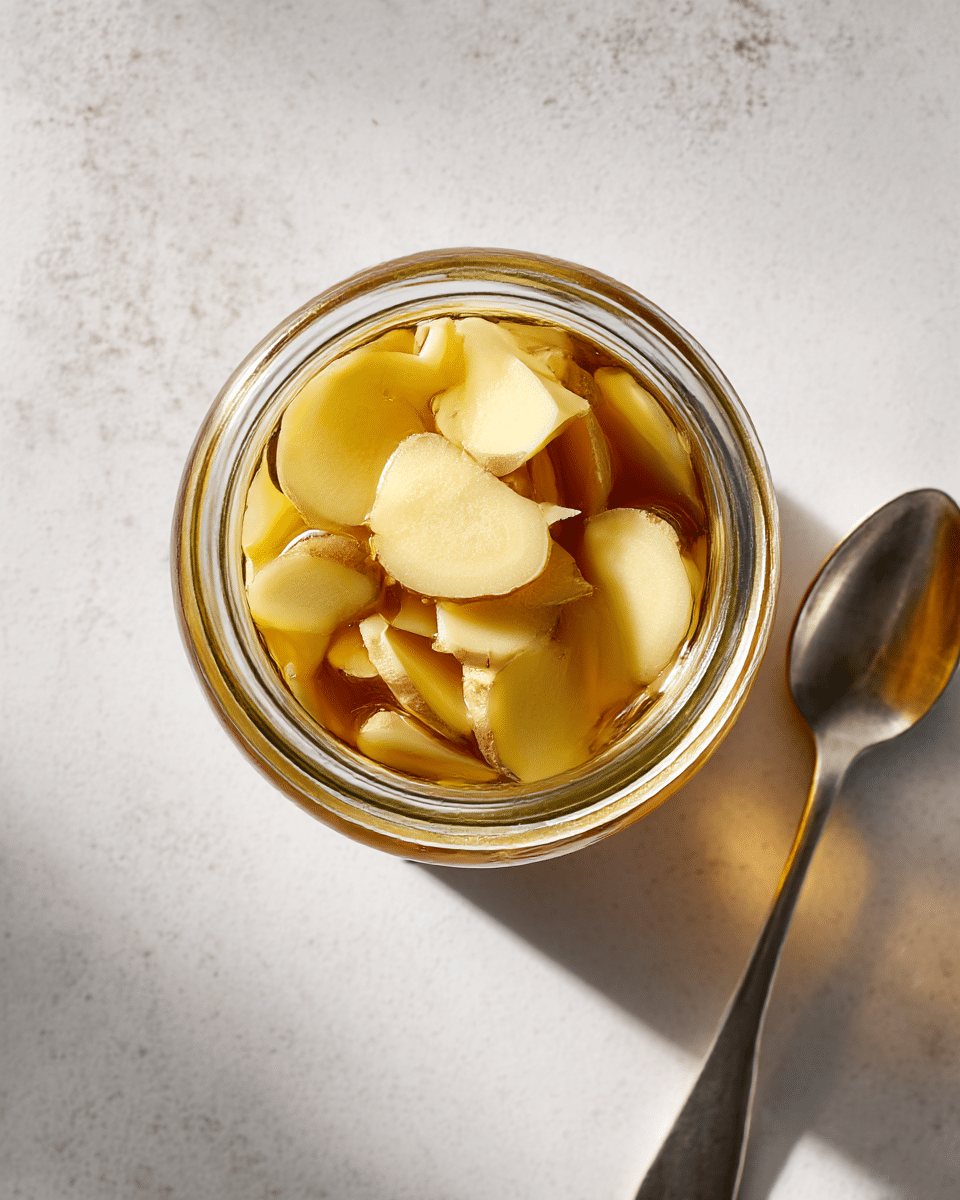Uses for fermented ginger go far beyond flavoring tea or boosting your gut. I discovered this almost by accident in my small kitchen in France. Curious about natural remedies, I combined raw honey and sliced ginger in a jar, sealed it, and left it to rest. Weeks later, I had unintentionally created one of the most powerful ingredients I now rely on daily.
From easing sore throats and improving digestion to brightening up salad dressings and soothing post-meal bloating, the uses for fermented ginger keep surprising me. It’s simple to make, yet packed with probiotics and anti-inflammatory compounds that support overall wellness.
So if you’re exploring the best uses for fermented ginger—whether for your immune system, skin, or just to upgrade your home remedies—you’re in the right place. Let’s dive into everything this golden tonic can do.
Table Of Content
❓ What is fermented ginger used for?
Fermented ginger is used for much more than flavor—it’s a natural powerhouse for gut health, immune support, and inflammation relief. Thanks to the fermentation process, it becomes rich in probiotics, enzymes, and bioactive compounds that support your body from the inside out.
People use fermented ginger:
- To ease digestion and reduce bloating after meals
- As a natural cold remedy, stirred into hot tea with lemon
- For immune system support during seasonal changes
- To enhance skin clarity through its anti-inflammatory properties
- In cooking—as a flavor booster in dressings, marinades, and sauces
Because it contains live cultures and beneficial acids, fermented ginger works similarly to other probiotic-rich foods like kimchi or sauerkraut, but with a sweet-spicy twist. It’s gentle enough for daily use, yet effective enough to notice real changes when used consistently.
Whether you’re adding a spoonful to your tea or taking it straight from the jar, the uses for fermented ginger blend wellness and taste in the most functional way possible.
🧪 Ingredients & How to Make Fermented Ginger
Fermenting ginger at home is simple—and requires just a few ingredients and a little patience. Here’s exactly what you need and how to bring it all together.
🌿 Ingredients:
- 1 cup fresh ginger root, peeled and thinly sliced or grated
- Raw honey, enough to fully cover the ginger in a jar
(or) 1 tsp sea salt + filtered water if fermenting with brine - Optional: lemon zest, turmeric, or black pepper for extra flavor
Subscribe to chopped-beef
Get updates on the latest posts and more from Sofie Recipes straight to your inbox.
🥣 Step-by-Step Instructions:

- Sterilize your jar with hot water and dry it thoroughly.
- Add ginger to the jar, filling it about ¾ full.
- If using honey, pour it over the ginger until it’s fully submerged.
If using salt: dissolve the salt in filtered water and pour over ginger. - Seal the jar loosely to allow gases to escape (or use a fermentation lid).
- Let it ferment at room temperature for 5–7 days. Stir or shake gently once per day.
- When it starts to bubble and taste tangy, move it to the fridge to slow fermentation.
💡 Your fermented ginger is now ready to use in tea, salad dressings, marinades, or even straight by the spoonful.
Honey Fermented Ginger
Ingredients
Method
- Instructions:
- Sterilize a clean glass jar with hot water and dry completely.
- Fill the jar ¾ full with sliced or grated ginger.
- Pour raw honey over the ginger until fully submerged.
- (Alternative: dissolve sea salt in water and pour over the ginger.)
- Loosely seal the jar or use a fermentation lid.
- Let it ferment at room temperature for 5–7 days, stirring daily.
- Once bubbly and tangy, refrigerate to slow fermentation.
Nutrition
Video
Notes
– Use organic ginger for best results.
– Shake gently once a day to redistribute ingredients.
– Always use clean utensils when scooping fermented ginger.
Did you make this recipe? Share a photo and tag us — Follow us at @chopped-beef_official for more
Share a photo and tag us — Follow us at @chopped-beef_official for more❓ Can you drink fermented ginger water?
Yes, you can absolutely drink fermented ginger water—and it’s one of the best ways to enjoy its benefits. When ginger ferments, it releases enzymes, beneficial acids, and probiotics into the liquid, creating a naturally tangy tonic that supports digestion and reduces inflammation.
Many people use it as a morning detox shot, a base for tea, or even as a pre-meal digestive aid. It has a light fizz and a sweet-spicy flavor, especially if made with honey.
🥤 How to drink it:
- Start small: 1 to 2 tablespoons diluted in warm water or herbal tea
- Add to smoothies: A spoonful gives your smoothie a probiotic boost
- Mix with lemon & cinnamon for a wellness elixir
Because it’s alive with beneficial microbes, fermented ginger water helps populate your gut with friendly bacteria while delivering the warming, anti-inflammatory effects of ginger.
💡 Tip: Always use clean utensils and refrigerate after opening to maintain its potency.
🍯 How to Enjoy This Honey-Fermented Ginger
This fermented ginger honey is as versatile as it is potent. You can enjoy it by stirring a spoonful into warm water or herbal tea for a soothing daily tonic, especially during cold mornings or after meals. Drizzle it over roasted vegetables for a sweet-spicy glaze, mix it into salad dressings for extra zing, or even blend it into smoothies for a probiotic kick. Some prefer taking it straight by the spoonful before meals to support digestion and curb cravings. However you use it, this naturally fermented honey adds depth of flavor—and a gentle boost of wellness—to your daily routine.
If you love functional drinks like this, you’ll also enjoy our Natural Zepbound Recipe—a simple, powerful blend of lemon, ACV, and ginger that naturally curbs appetite and boosts energy. It’s another delicious way to bring wellness into your daily routine.
❓ How long does it take for ginger to ferment?
Subscribe to chopped-beef
Get updates on the latest posts and more from Sofie Recipes straight to your inbox.
Ginger typically takes 5 to 7 days to ferment at room temperature, depending on the method used and the warmth of your kitchen. If you’re using the honey fermentation method, you’ll start to see small bubbles and smell a mild tanginess after just a few days.
The process is slightly faster in warmer environments (70–75°F or 21–24°C) and may take a bit longer in cooler rooms. Fermented ginger is ready when:
- It becomes lightly fizzy
- The flavor turns tangy-sweet
- The ginger softens slightly while still keeping a bit of bite
💡 After it reaches your desired taste, move it to the fridge to slow fermentation. This helps preserve flavor and maintain probiotic activity for several weeks—or even longer.
If you’re unsure, taste a small spoonful on day 5, then adjust. The beauty of fermented ginger is that it keeps developing depth over time.
Top 5 Everyday Uses for Fermented Ginger
| Use Case | Functional Benefit |
|---|---|
| Added to hot tea or lemon water | Soothes sore throat, boosts immunity |
| Mixed into salad dressings or marinades | Improves digestion, enhances flavor naturally |
| Consumed as a daily tonic | Delivers probiotics, supports gut health |
| Blended into smoothies | Reduces inflammation, boosts metabolism |
| Used as a glaze on roasted vegetables or chicken | Adds antioxidants and a touch of natural sweetness |
❓ What are the four ingredients in natural Mounjaro?
While natural Mounjaro isn’t an official product, the phrase often refers to a DIY wellness tonic that mimics the appetite-regulating and metabolism-supporting effects of GLP-1 medications—without pharmaceuticals. The most common version includes four powerful ingredients:
- Fresh lemon juice – supports digestion and alkalizes the body
- Apple cider vinegar (with the mother) – helps stabilize blood sugar and curb cravings
- Fresh ginger – soothes the gut and reduces inflammation
- Cayenne pepper – promotes thermogenesis and metabolic activation
Combined, these ingredients create a natural elixir that encourages satiety, improves digestive function, and delivers a mild detox effect. While not a substitute for medical treatments like Mounjaro, this natural blend is a simple, accessible option for those seeking gentle, food-based support for appetite and metabolism.
How to Enjoy This Honey-Fermented Ginger

| Benefit | How It Helps |
|---|---|
| Digestive Support | Promotes gut health with natural probiotics and soothes inflammation. |
| Immune Boost | Raw honey and ginger work together to fight off seasonal bugs. |
| Anti-Inflammatory | Helps reduce joint pain, swelling, and internal inflammation naturally. |
| Natural Energy | Provides a gentle energy lift without caffeine or sugar crashes. |
| Skin Health | Antioxidants in ginger and honey support clear, glowing skin. |
🌿 More Everyday Uses for Fermented Ginger You Haven’t Tried Yet
Beyond teas and health tonics, there are many uses for fermented ginger that blend seamlessly into everyday meals and rituals. Its sweet, tangy, and slightly spicy profile enhances both savory and sweet dishes—while delivering natural probiotics.
You can mix a spoonful into warm oatmeal for a gut-friendly breakfast, or drizzle the ginger-infused honey over roasted carrots or sweet potatoes. It also works beautifully in vinaigrettes or marinades, giving your greens and proteins a subtle depth with health perks.
Don’t overlook its topical potential either. The enzymes in the fermentation can be soothing when added (diluted) to a DIY facial mask or used in foot soaks to reduce inflammation. These lesser-known uses for fermented ginger make it a surprisingly versatile ally in both your kitchen and your wellness cabinet.
Whether you’re aiming to improve digestion, add flavor to clean meals, or support skin naturally, the uses for fermented ginger extend far beyond what most people imagine. It’s not just an ingredient—it’s a multipurpose health tool hiding in a jar.

Fermented ginger isn’t just a traditional remedy—it’s supported by growing scientific research. According to the National Institutes of Health (NIH) , ginger contains compounds like gingerol and shogaol, which exhibit strong anti-inflammatory, antioxidant, and antimicrobial properties. When fermented, its bioavailability may increase, allowing your body to absorb these benefits more efficiently.
Combining fermentation with raw honey adds naturally occurring probiotics, making this preparation a powerful ally for gut health, immune balance, and metabolic support—all backed by both science and centuries of use.
Subscribe to chopped-beef
Get updates on the latest posts and more from Sofie Recipes straight to your inbox.
🌿 Final Thoughts on the Many Uses for Fermented Ginger
From boosting your digestion to elevating your everyday meals, the uses for fermented ginger are as diverse as they are powerful. What begins as a simple mix of honey and ginger transforms into a wellness essential—rich in probiotics, enzymes, and functional flavor. Whether you stir it into tea, add it to dressings, or enjoy it by the spoonful, this ancient remedy has earned its place in modern routines.
As you begin to explore the full uses for fermented ginger in your life—beyond the jar—you’ll discover just how simple it is to support your body naturally. No synthetic ingredients, no complicated prep—just real food, real benefits, and real transformation.
Looking for more naturally fermented recipes? Be sure to explore the rest of our wellness collection, where tradition meets modern nutrition in the most delicious ways.


